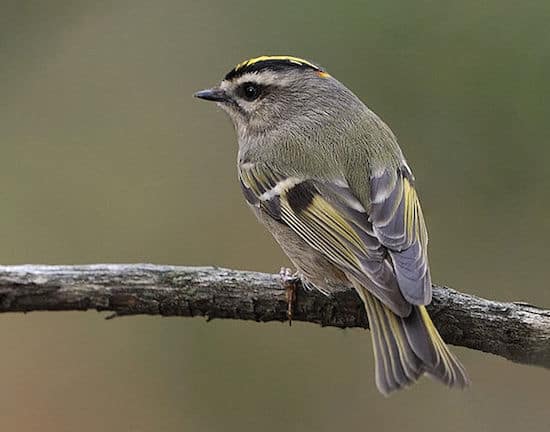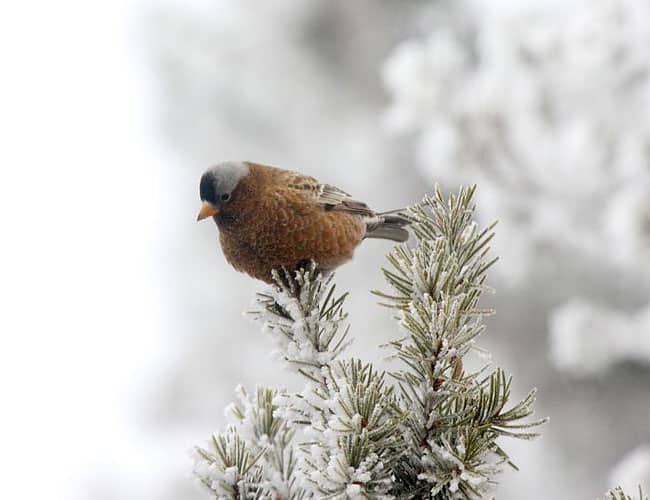Look for
After various hummingbirds, the tiny, plump golden-crowned kinglet is North America’s smallest bird. What it lacks in size, it makes up for in energy, constantly flipping its wings and flitting, tilting, and scooting across branches in search of even more diminutive prey. A reasonably good look will reveal its striking face pattern, with its yellow (female) or yellow-and-orange (male) crown bordered in black and a black stripe through the eye.
In contrast, the other North American kinglet, the ruby-crowned, has a bold, white eye ring and rarely shows its scarlet crown patch. Both kinglets flick their wings and have single wing bars, short tails, and tiny bills. In comparison, most warblers are longer and slimmer. Kinglets frequently associate with other small songbirds, including chickadees, titmice, and warblers, and you may find both kinglet species in the same flock.
Listen for
The call of the golden-crowned kinglet is more commonly heard than its song: a high, thin seet-seet-seet! The song is a series of thin see notes rising in tone to a thin jumble of notes that falls back down the scale.
Find it
The golden-crowned kinglet is primarily a northern nester, but its breeding range dips well south to the Appalachians and also includes western mountains and the Pacific Northwest. In the East, they commonly nest in mature spruce forests, including stands of tall Norway spruce, and their range has expanded somewhat in recent decades.
In winter, golden-crowned kinglets are found across much of the United States in deciduous and mixed forests, as well as in coniferous forests. They often forage high in trees but can also be seen low down, at times even descending to tall-weed level.
Feeding Behavior
Golden-crowned kinglets feed on a range of insects and other invertebrates and their eggs. In the cold of winter, they relentlessly glean brittle twigs and branches, vines, and stems for dormant invertebrates and egg clusters. Summer finds them among spruces and pines, seeking a variety of spiders, gnats, and caterpillars. They tilt over to look under branches and hover briefly to seek or secure prey.
Nesting Behavior
The female golden-crowned kinglet knits together bits of bark, lichen, leaf fragments, and other materials to construct her cup-shaped nest, where she lays nine or so tiny pale eggs. She incubates her clutch for about two weeks. Both male and female feed the hatchlings, which leave the nest before they are 20 days old.
WOW!
Kinglets of both species are able to hover underneath a branch to glean insects off the undersides of the foliage.




